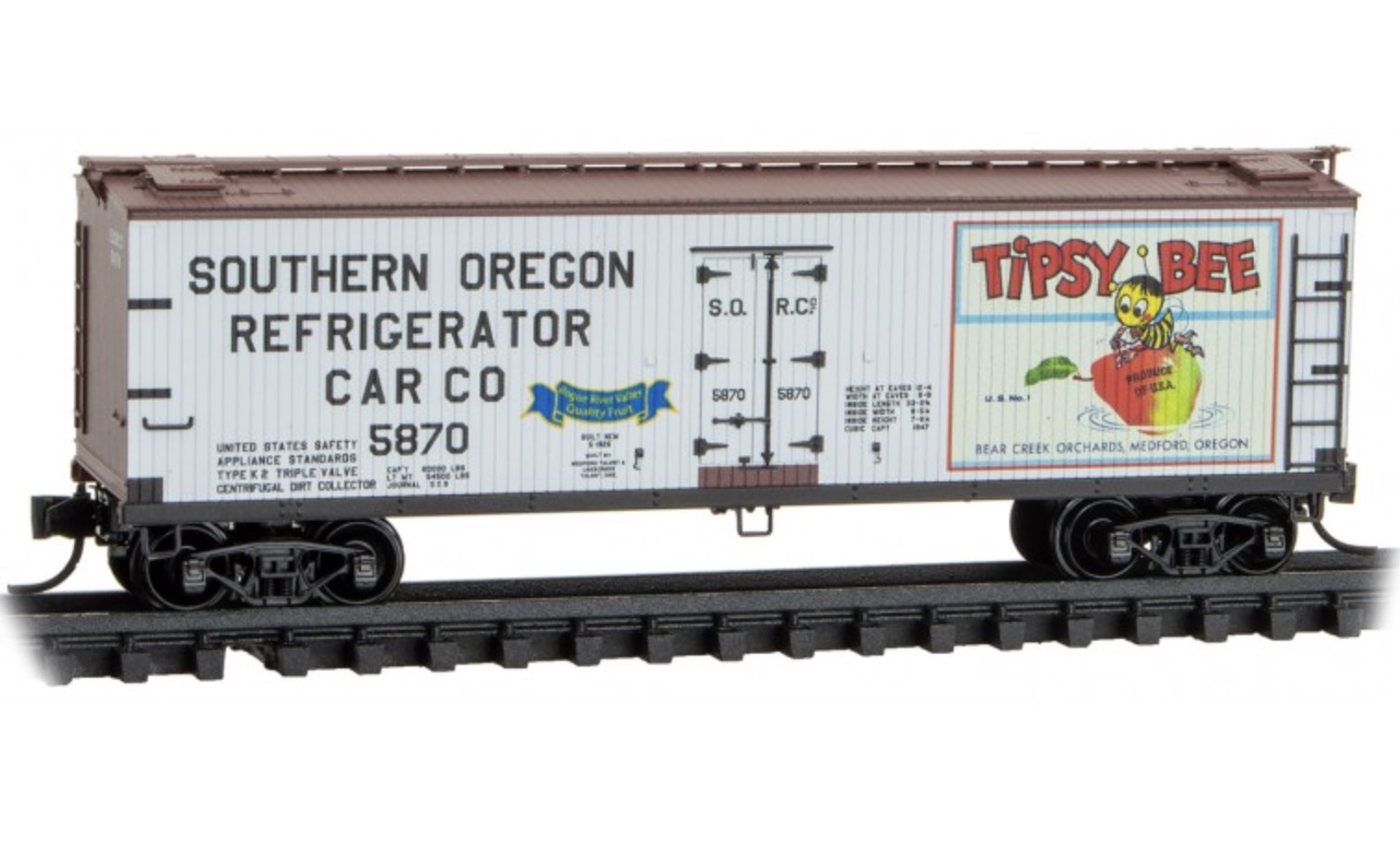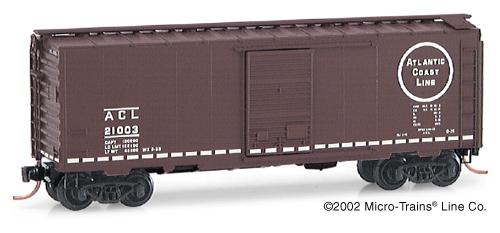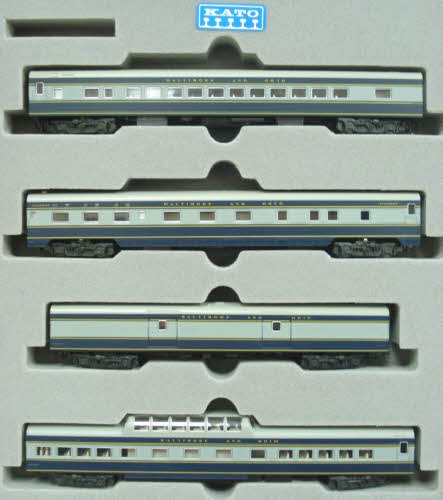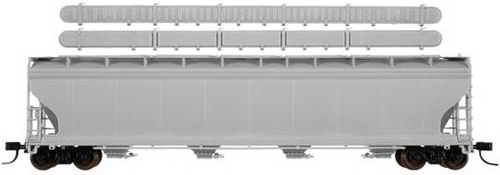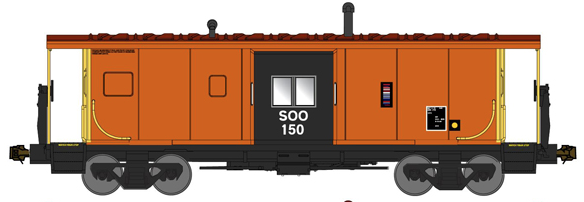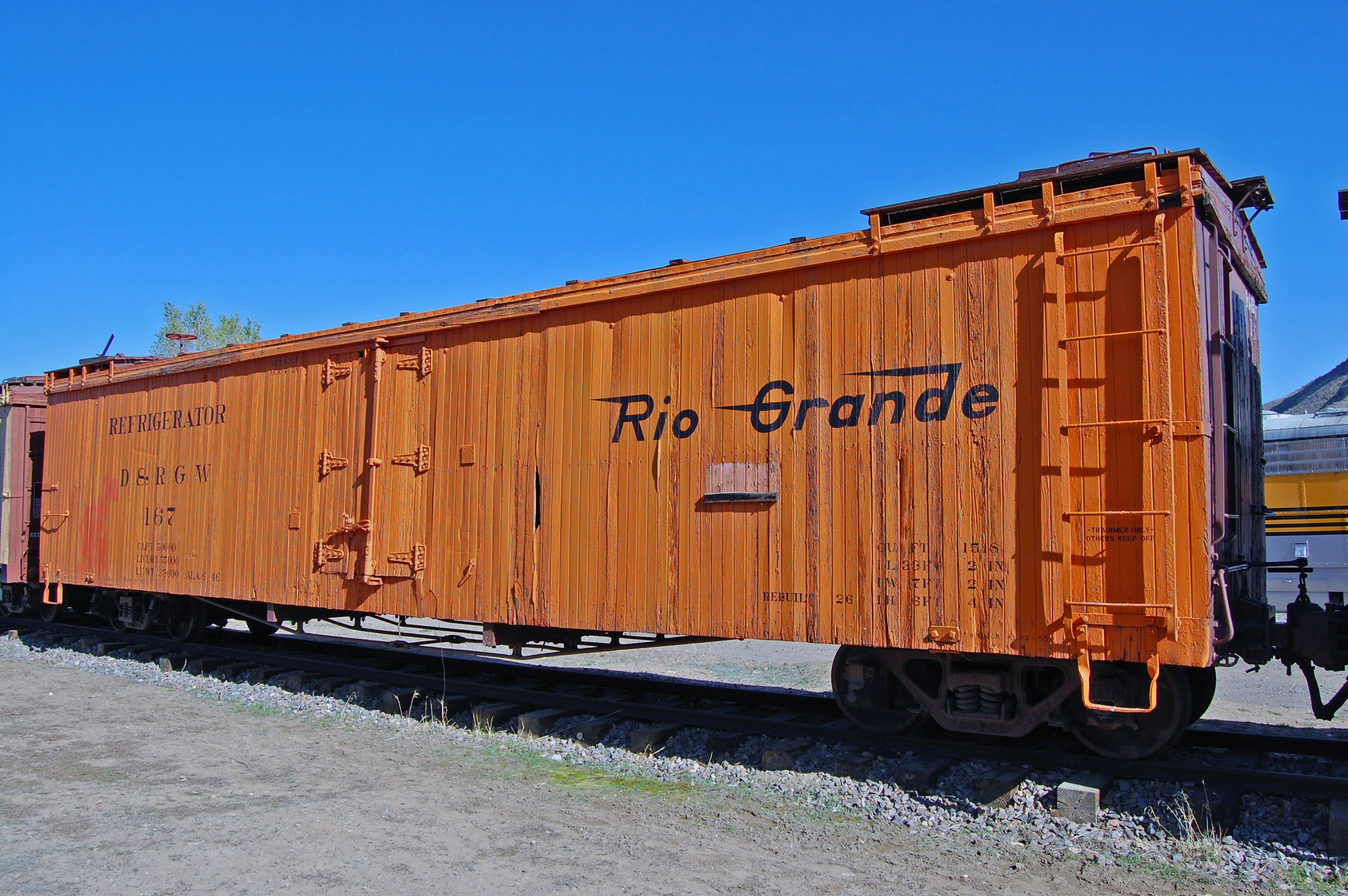Specific Item Information: Built by Medford, Talent & Lakecreek in 1926, this car served various orchards and fruitpackers around the Rogue Valley. The Medford, Talent & Lakecreek Railroad was established in 1918 to serve the communities throughout Oregon’s Rogue Valley, helping move commodities to the Southern Pacific interchanges.
Model Information: Micro-Trains introduced this body style in July of 1982. It features opening roof hatches - an innovation for N Scale at the time. The detail of the body combined with the high quality printing makes this tooling an excellent choice for modeling early-20th century billboard reefers. It is particularly well suited for modeling the cars used by pre-war meat packers. The prototype is a 40 Foot Wood-Sheathed Ice Reefer with vertical brake wheel (the wheel itself is horizontal).
Prototype History: In 1924 and 1926, the D&RGW shops in Alamosa built one last class of refrigerator cars, still made mostly of wood: twenty "long" reefers, with a length of 40ft and a capacity of 25 tons (#150 to 169). They rode on Andrews trucks and were designed to have the same capacity as a small standard gauge refrigerator car, to facilitate transhipments at the gauge changing points. In 1967, 12 of these refrigerator cars were still active on the Rio Grande. Today, four long reefers are conserved on the Cumbres & Toltec Scenic Railroad (#157, 163, 166 and 169), two at the Colorado Railroad Museum (#159 and 167), one on the Georgetown Loop Railroad (#153) and #168 is part of the Sumpter Valley Railway collection.
Road Name History: 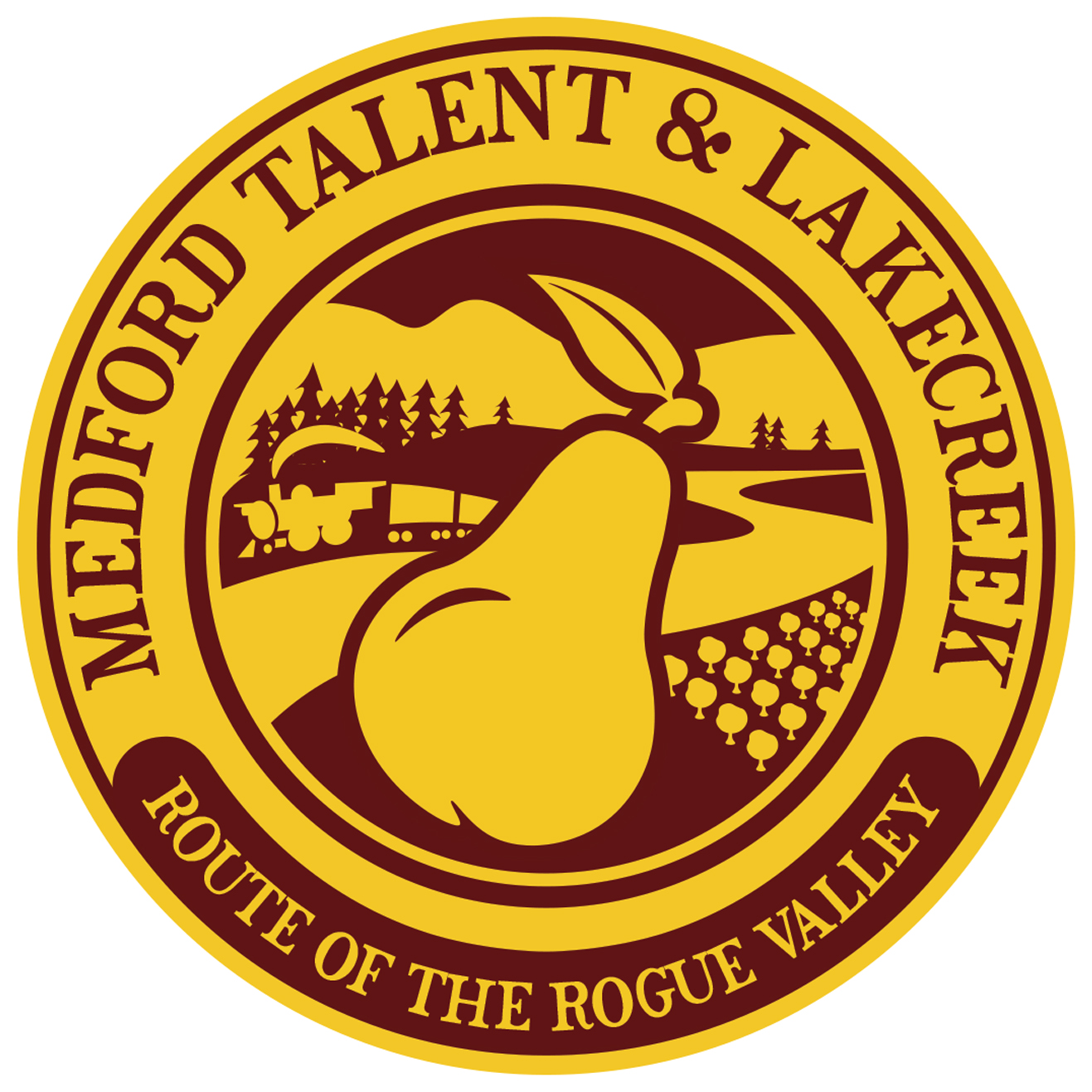 The Medford, Talent and Lake Creek Railroad was established in 1918 to help local Rogue Valley communities move commodities to the Southern Pacific interchanges. The success of the model shortline in the early days brought not only commercial interest,s but tourist traffic to the region. The lush agricultural landscape, moderate climate and natural wonders of the Rogue Valley proved a great draw and helped establish the MT&L RR as a healthy regional line in Southern Oregon by the mid 20th Century. While most of the traffic supported the local fisheries, growers and fruit processors, the timber brought down through Lake Creek from the western flanks of the surrounding Cascades insured success for the fledging rail line.
The Medford, Talent and Lake Creek Railroad was established in 1918 to help local Rogue Valley communities move commodities to the Southern Pacific interchanges. The success of the model shortline in the early days brought not only commercial interest,s but tourist traffic to the region. The lush agricultural landscape, moderate climate and natural wonders of the Rogue Valley proved a great draw and helped establish the MT&L RR as a healthy regional line in Southern Oregon by the mid 20th Century. While most of the traffic supported the local fisheries, growers and fruit processors, the timber brought down through Lake Creek from the western flanks of the surrounding Cascades insured success for the fledging rail line.
By 1927 the numbers doubled as did the daily traffic of coaches and private parlor cars through the windy passage along the banks of the Upper Rogue River. In 1929 track was completed to the coast following the Lower Rogue to Gold Beach which provided a necessarly link to small communities delivering commodities and mail. With the completion of the link, the Rogue Valley flourished as did the MT&L RR enabling both to survive the coming Depression and Beyond. Source: Micro-Trains Line

By 1927 the numbers doubled as did the daily traffic of coaches and private parlor cars through the windy passage along the banks of the Upper Rogue River. In 1929 track was completed to the coast following the Lower Rogue to Gold Beach which provided a necessarly link to small communities delivering commodities and mail. With the completion of the link, the Rogue Valley flourished as did the MT&L RR enabling both to survive the coming Depression and Beyond. Source: Micro-Trains Line
Brand/Importer Information: Micro-Trains is the brand name used by both Kadee Quality Products and Micro-Trains Line. For a history of the relationship between the brand and the two companies, please consult our Micro-Trains Collector's Guide.
Manufacturer Information:  Micro-Trains Line split off from Kadee Quality Products in 1990. Kadee Quality Products originally got involved in N-Scale by producing a scaled-down version of their successful HO Magne-Matic knuckle coupler system. This coupler was superior to the ubiquitous 'Rapido' style coupler due to two primary factors: superior realistic appearance and the ability to automatically uncouple when stopped over a magnet embedded in a section of track. The success of these couplers in N-Scale quickly translated to the production of trucks, wheels and in 1972 a release of ready-to-run box cars.
Micro-Trains Line split off from Kadee Quality Products in 1990. Kadee Quality Products originally got involved in N-Scale by producing a scaled-down version of their successful HO Magne-Matic knuckle coupler system. This coupler was superior to the ubiquitous 'Rapido' style coupler due to two primary factors: superior realistic appearance and the ability to automatically uncouple when stopped over a magnet embedded in a section of track. The success of these couplers in N-Scale quickly translated to the production of trucks, wheels and in 1972 a release of ready-to-run box cars.
Micro-Trains Line Co. split off from Kadee in 1990 to form a completely independent company. For this reason, products from this company can appear with labels from both enterprises. Due to the nature of production idiosyncrasies and various random factors, the rolling stock from Micro-Trains can have all sorts of interesting variations in both their packaging as well as the products themselves. When acquiring an MTL product it is very important to understand these important production variations that can greatly enhance (or decrease) the value of your purchase.
Please consult our Micro-Trains Collector's Guide

Micro-Trains Line Co. split off from Kadee in 1990 to form a completely independent company. For this reason, products from this company can appear with labels from both enterprises. Due to the nature of production idiosyncrasies and various random factors, the rolling stock from Micro-Trains can have all sorts of interesting variations in both their packaging as well as the products themselves. When acquiring an MTL product it is very important to understand these important production variations that can greatly enhance (or decrease) the value of your purchase.
Please consult our Micro-Trains Collector's Guide
Item created by: CNW400 on 2023-07-15 12:35:46. Last edited by CNW400 on 2023-07-15 12:43:16
If you see errors or missing data in this entry, please feel free to log in and edit it. Anyone with a Gmail account can log in instantly.
If you see errors or missing data in this entry, please feel free to log in and edit it. Anyone with a Gmail account can log in instantly.


